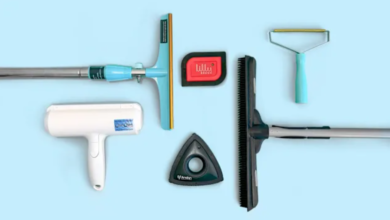When to Replace a Pond Filter to Avoid Water Quality Decline and Fish Stress

A pond filter is the foundation of a clean, balanced, and thriving pond ecosystem, acting as the unseen guardian that keeps water healthy, clear, and full of life. This essential piece of equipment works by removing physical debris, breaking down harmful waste, and maintaining stable water conditions for fish, plants, and other aquatic life. Without a reliable pond filter, water quality can quickly decline—becoming cloudy, overrun with algae, and unsafe for fish due to dangerous toxin buildup.
Mechanical filtration within a pond filter serves as the first line of defense, capturing debris such as fallen leaves, fish waste, uneaten food, and other particles before they decompose and pollute the pond. The biological filtration stage supports colonies of beneficial bacteria that grow on the filter media; these microorganisms convert toxic ammonia and nitrite into safer nitrate, which plants can naturally absorb. For ponds prone to persistent green water caused by microscopic algae, a UV clarifier can be added to the pond filter system. This component uses ultraviolet light to destroy algae cells and harmful microorganisms, preventing reproduction and keeping the water crystal clear. By combining mechanical, biological, and UV filtration, a pond filter ensures that the pond remains a stable, healthy environment where fish thrive, plants flourish, and water stays clean throughout the year.
Choosing the Right Pond Filter for Your Needs
Selecting the correct pond filter begins with knowing the specific requirements of your pond. The size, fish population, and environmental factors all play a role in determining the best system.
Consider Pond Size and Water Volume
Filters are rated for a maximum water capacity. Choosing one that exceeds your pond’s actual volume ensures better performance, especially in koi ponds where waste levels are higher. Oversizing your filter also reduces strain and extends its lifespan.
Match the Filter to Your Pond’s Inhabitants
Heavily stocked ponds require robust biological filtration to keep ammonia and nitrite levels safe. If your pond is ornamental with minimal fish, a smaller, less powerful system can work effectively without overcomplication.
Factor in Climate and Sunlight Exposure
Ponds in full sun tend to have faster algae growth, making UV clarifiers highly beneficial. In colder climates, winterizing your pond filter helps prevent freezing damage and extends the life of the equipment.
Types of Pond Filters and Their Benefits
Different pond filter types serve different purposes, and in many cases, using a combination provides the best results.
Mechanical Pond Filters
Mechanical systems remove solid debris such as leaves, excess fish food, and sludge. Common designs use foam pads, brushes, or mesh barriers to trap particles before they decay and affect water quality.
Biological Pond Filters
Biological systems focus on improving water chemistry by cultivating colonies of beneficial bacteria. These bacteria live on filter media such as ceramic rings, bio balls, or lava rock, breaking down harmful ammonia into less toxic compounds.
UV Clarifiers
UV clarifiers pass water through a chamber where ultraviolet light eliminates microscopic algae and pathogens. This prevents green water, improving visibility and reducing disease risks for fish.
Buying a Pond Filter – What to Look For
When shopping for a pond filter, look beyond basic specifications. The quality of materials, ease of maintenance, and compatibility with your pump system are equally important.
Build Quality and Durability
Filters should be made from UV-resistant plastics or corrosion-proof metals to withstand constant exposure to water and sunlight. Strong housing reduces the risk of cracks or leaks.
Warranty and Support
A solid warranty gives peace of mind and reflects the manufacturer’s confidence in their product. Choosing a brand with good customer support makes troubleshooting easier.
Maintenance Requirements
Some filters feature quick-release systems for easy cleaning, while others require more hands-on work. Select a design that fits your schedule and willingness to perform regular upkeep.
Installation Tips for Best Performance
The placement of your pond filter significantly affects how well it works. Ideally, it should be located where it can receive a steady flow of water from the pump. Ensure the intake and outflow areas are free from obstructions, and avoid placing the filter in areas where debris can immediately re-enter the pond. For pressurized filters, make sure all seals are tight to prevent leaks and maintain pressure.
Maintaining a Pond Filter Year-Round
Consistent maintenance keeps your pond filter operating at peak efficiency. A neglected filter can quickly clog, reducing water flow and filtration effectiveness.
Seasonal Care Strategies
In spring, inspect and clean your filter to prepare for increased biological activity. During summer, monitor for algae buildup and rinse mechanical media as needed. In autumn, remove fallen leaves before they clog the filter. In winter, depending on your climate, either run the filter at a reduced capacity or remove and store it in a frost-free location.
Avoiding Common Problems
Watch for signs such as reduced water flow, cloudy water, or unusual odors, which may indicate clogs or failing components. Replace worn filter media when necessary, and always follow manufacturer recommendations for cleaning frequency.
Innovations in Pond Filter Technology
Recent advancements have made pond filters more efficient, eco-friendly, and user-friendly. Energy-efficient pumps and smart filtration systems now allow pond owners to monitor performance remotely. Some filters use bio-based or recycled materials for media, reducing environmental impact. Solar-powered filters are also becoming popular, offering sustainable operation without increasing energy bills.
Choosing the Best Pond Filter for Fish Health
For ponds with fish, especially koi, the filter must handle both waste removal and water chemistry stabilization. A hybrid system combining mechanical, biological, and UV filtration provides comprehensive protection, ensuring clear water and a safe environment for aquatic life. Filter media choice also plays a role; ceramic rings, bio sponges, and specialized bio media offer superior bacterial growth surfaces, enhancing biological filtration efficiency.
Keeping Your Pond Filter Efficient Through Every Season
Efficiency comes from both proper equipment choice and consistent care. Adapting your filtration strategy to the season prevents performance drops. In summer, prioritize algae control and increased water circulation. In autumn, focus on leaf removal. Winter care depends on whether your pond remains active or is shut down, but protecting the filter from freezing is essential in cold climates.
Final Thoughts
A pond filter is more than just an accessory; it is an essential part of maintaining a healthy, clear, and beautiful pond. By choosing the right system for your pond’s size, inhabitants, and environment, and by keeping up with seasonal maintenance, you can enjoy crystal-clear water and thriving aquatic life throughout the year. Whether you have a small garden feature or a large koi pond, investing in the right pond filter and caring for it properly will ensure your pond remains a source of beauty and relaxation for years to come.





